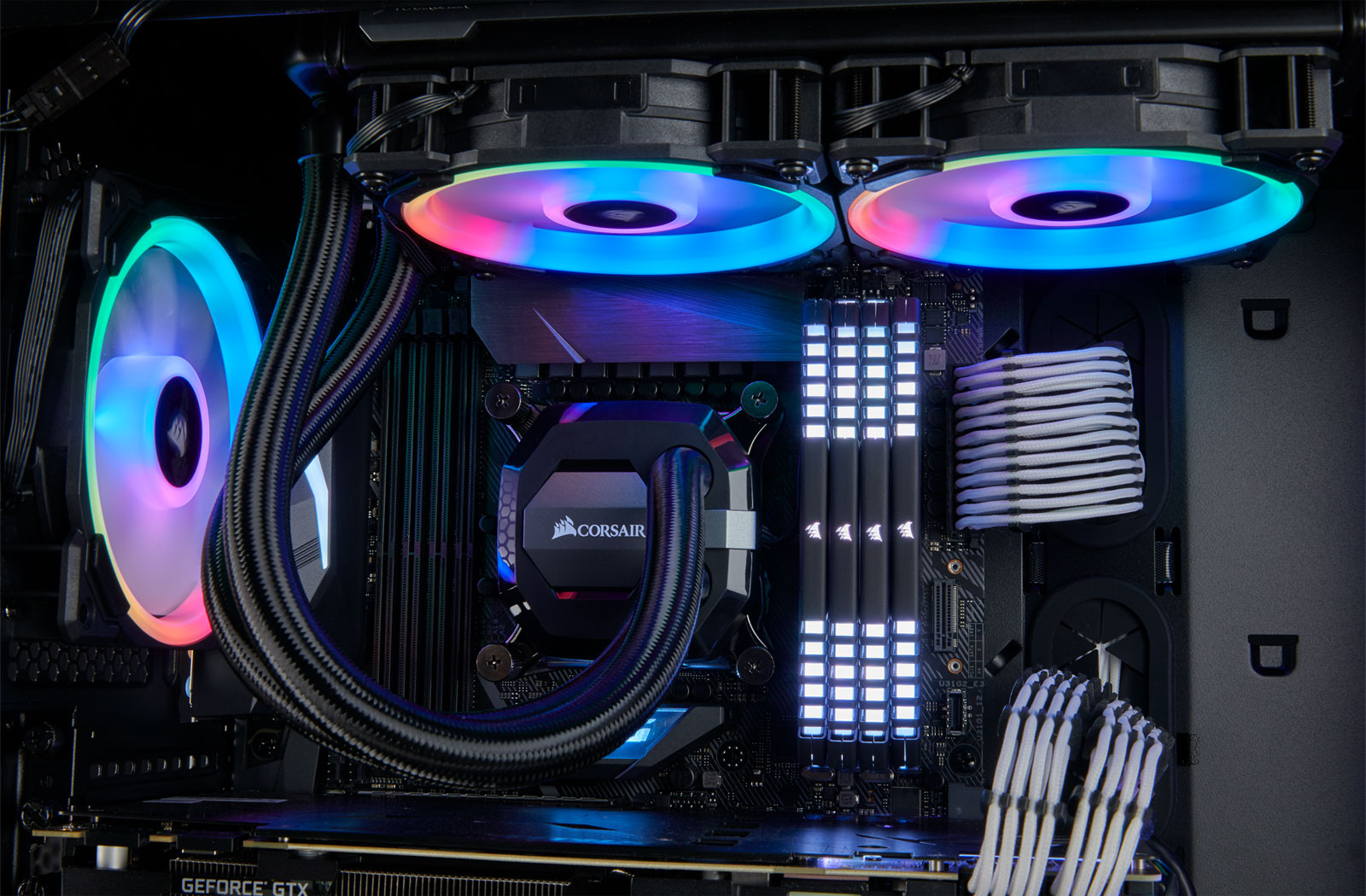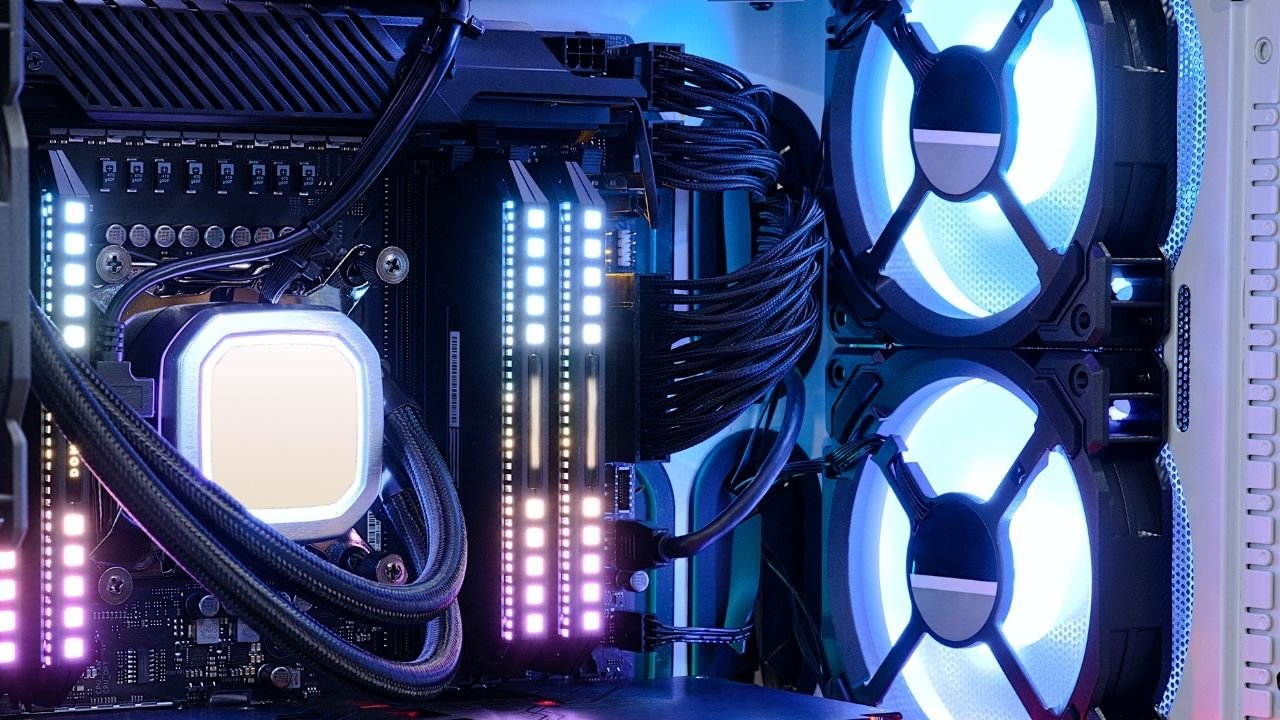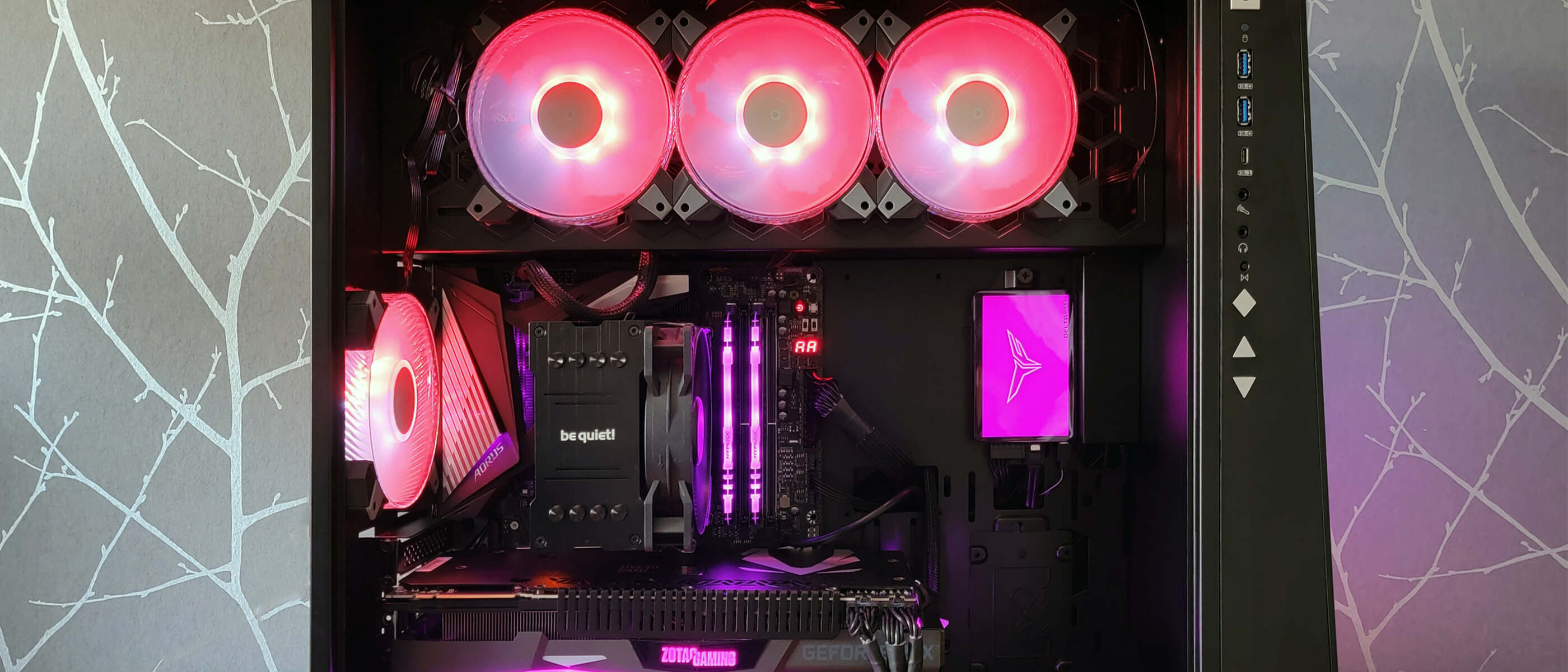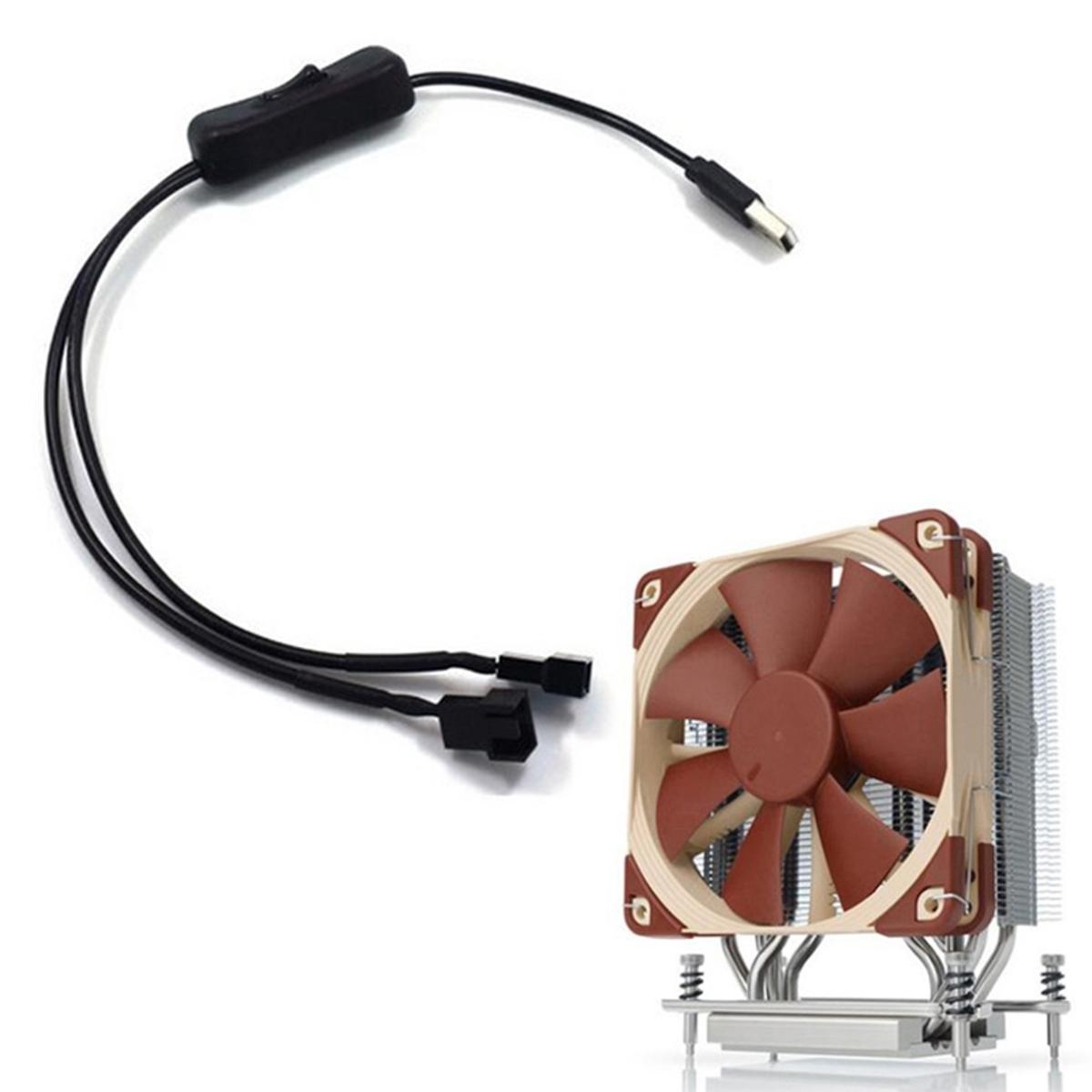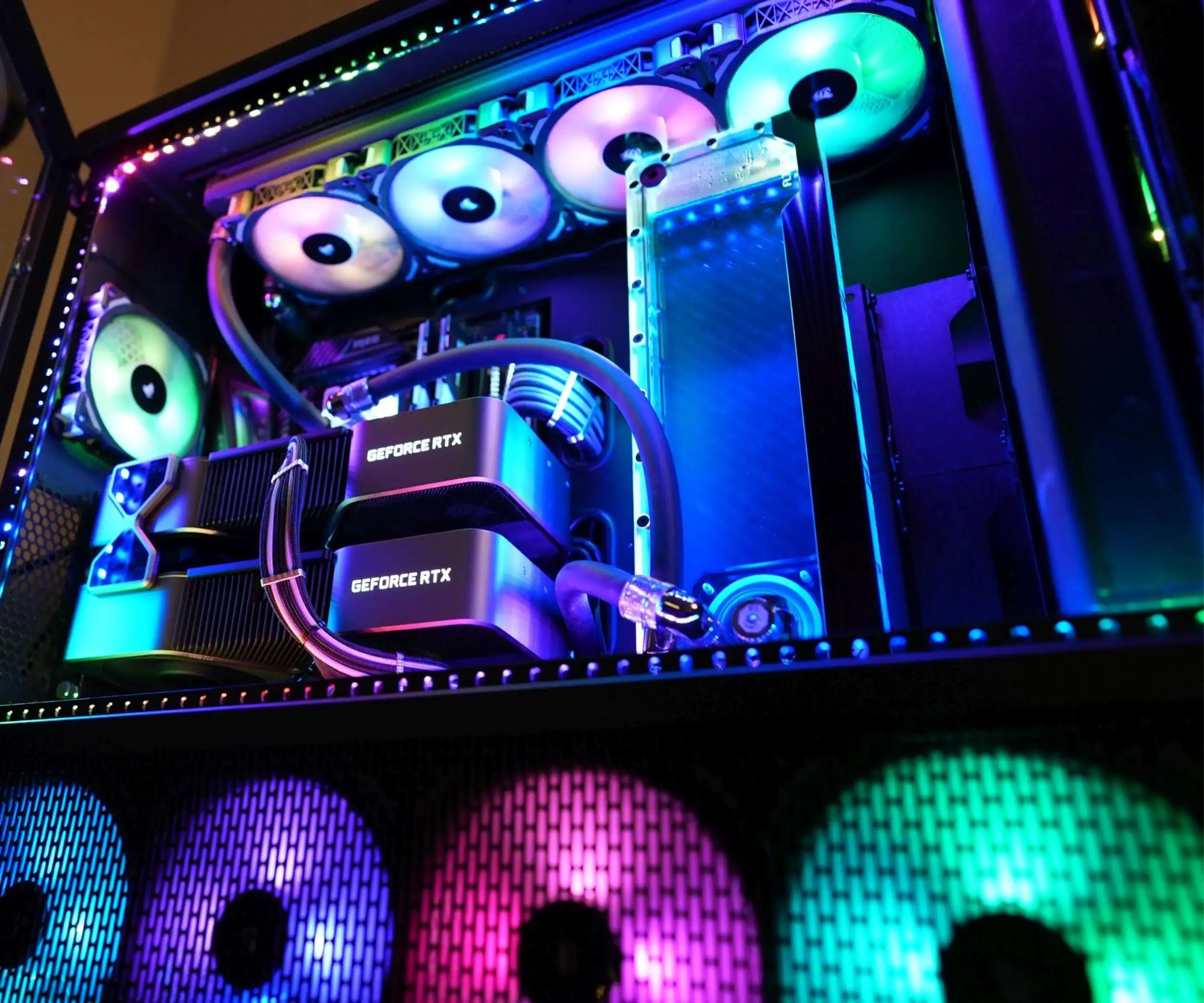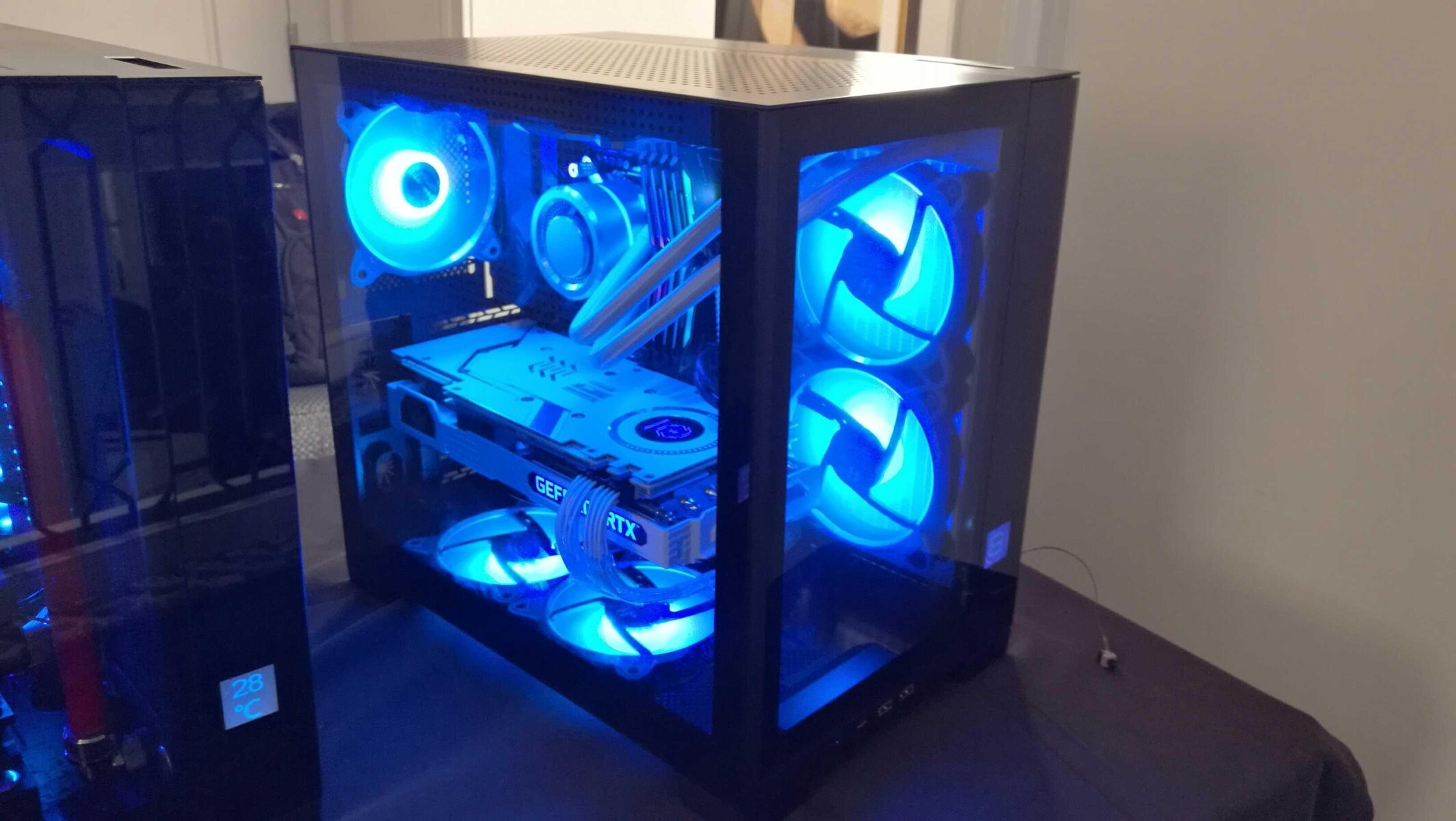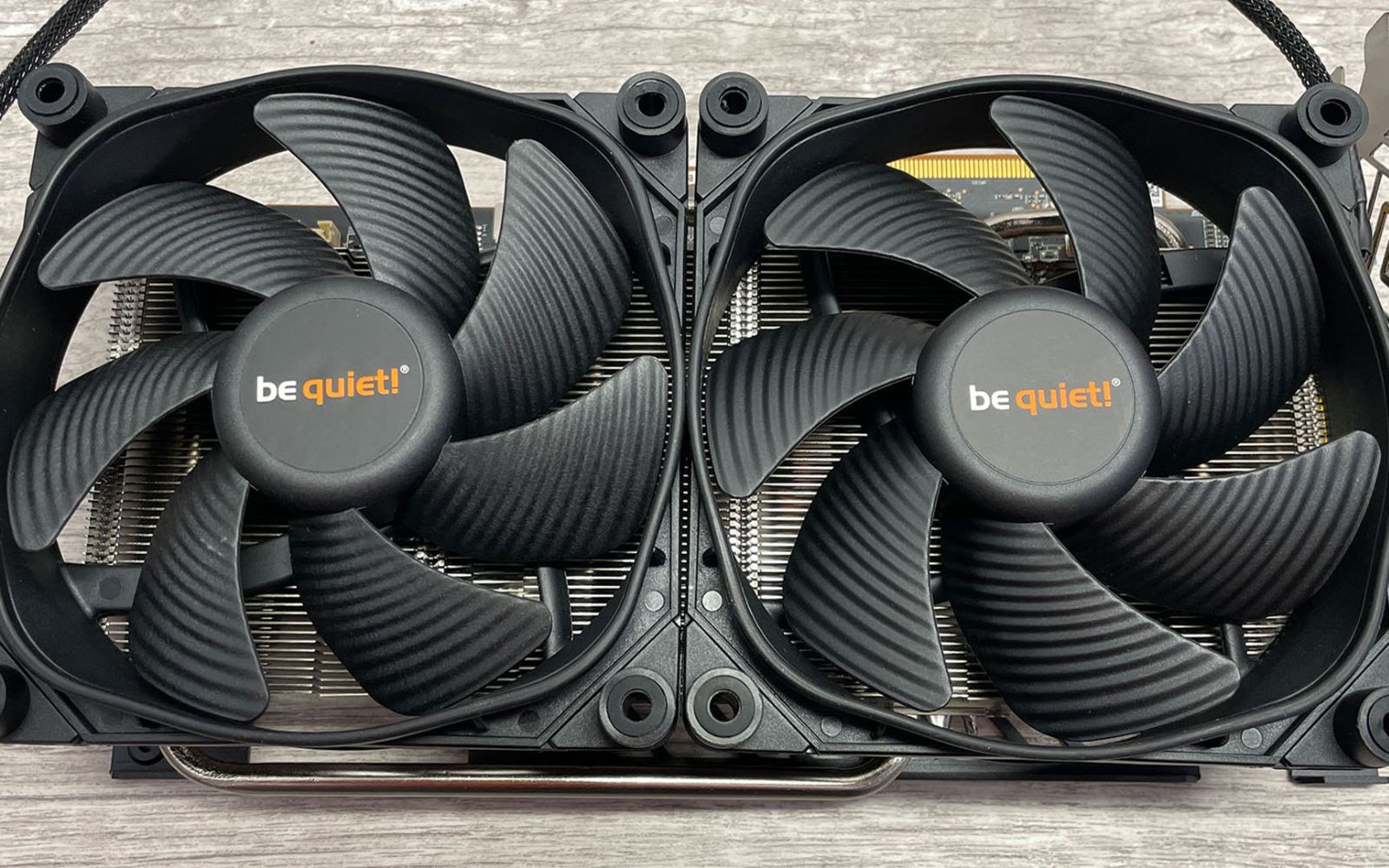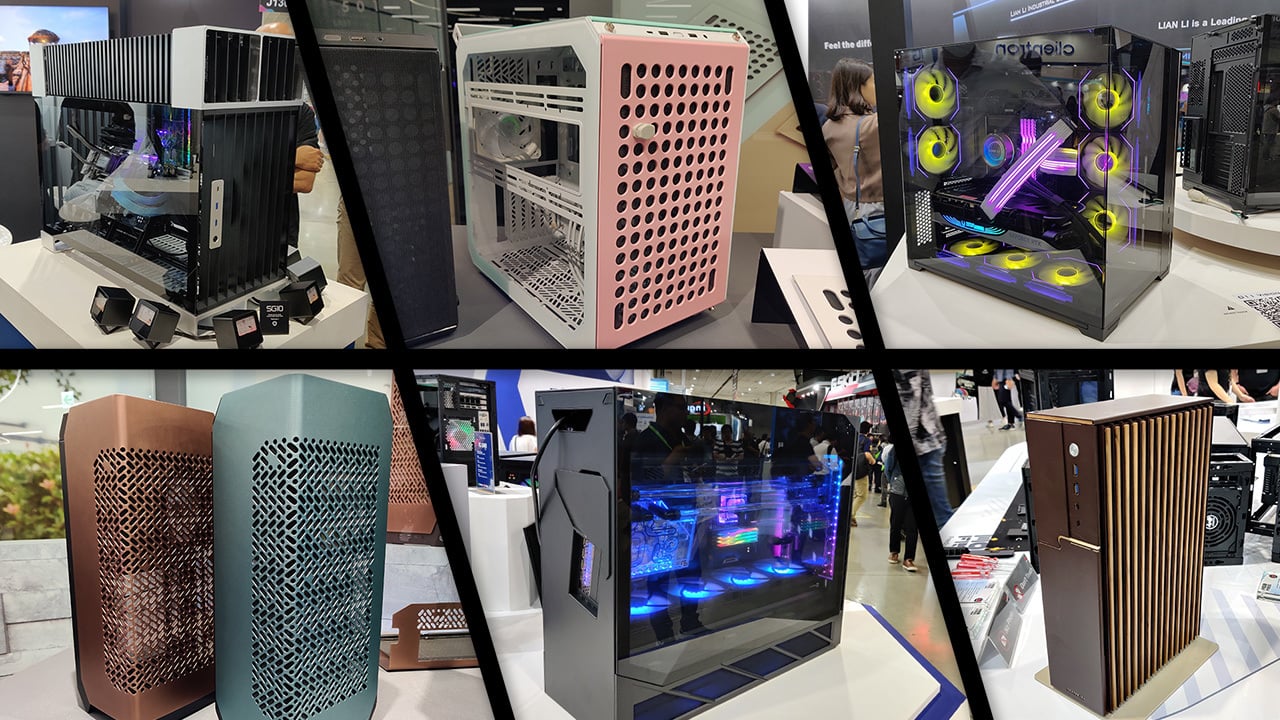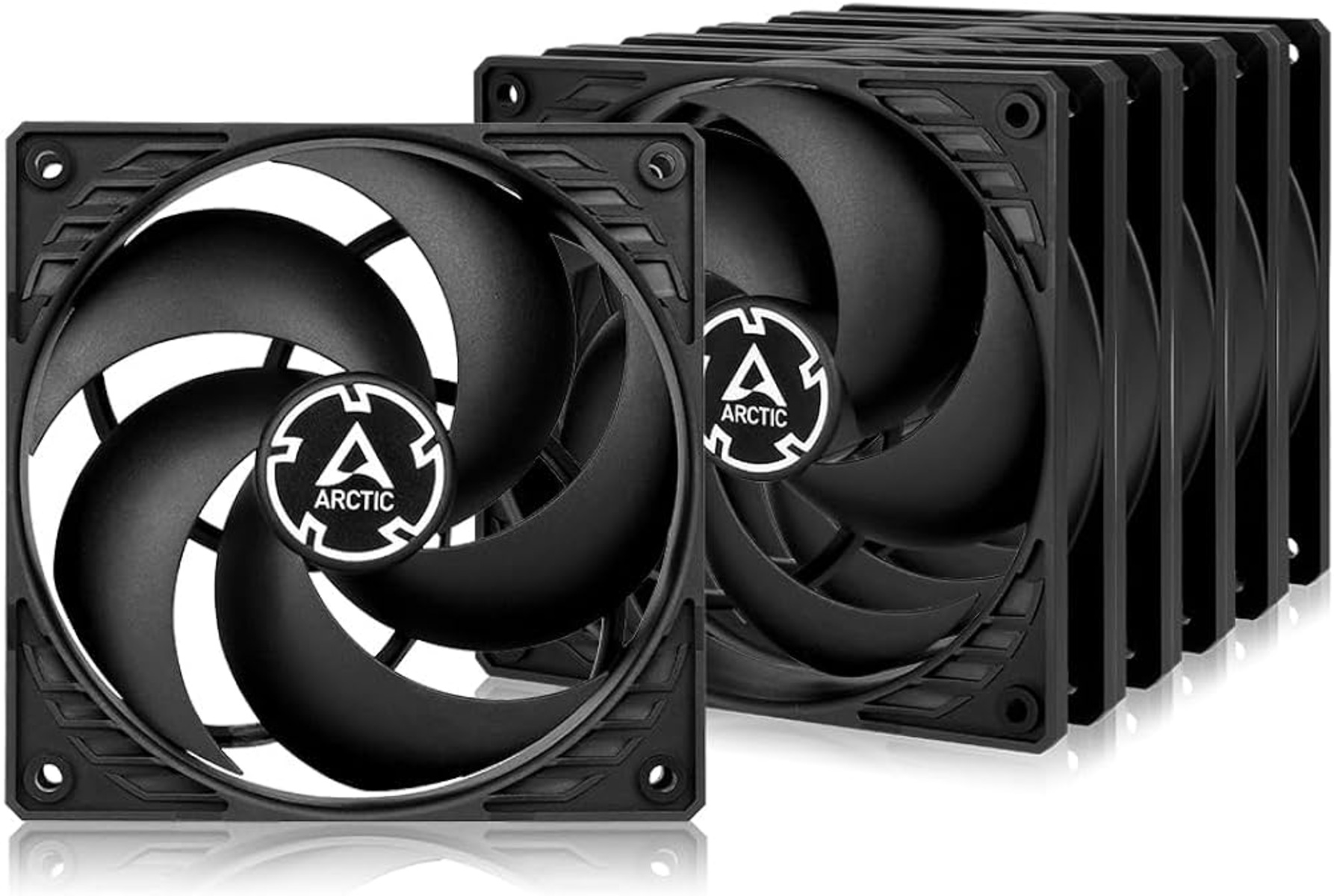Introduction
Welcome to the world of computer hardware where every component plays a crucial role in maintaining the overall performance and longevity of your system. One such essential component that often goes unnoticed is the case fan. While you may already be familiar with the concept of cooling fans, understanding the specific role of case fans is vital in ensuring the optimal functioning of your computer.
A case fan, as the name suggests, is a fan that is installed within the computer case. Its primary purpose is to facilitate the circulation of air throughout the case, helping to dissipate heat generated by the internal components. By providing adequate airflow, case fans play a vital role in preventing overheating, enhancing system performance, and ensuring the longevity of your hardware.
While modern computer cases often come equipped with built-in case fans, it is still essential to have a clear understanding of their importance and how they can benefit your system. In this article, we will delve into the world of case fans, exploring their functions, types, positioning, and maintenance. So, let’s get started and uncover the secrets behind this little powerhouse in your computer case.
What is a Case Fan?
A case fan, also known as a chassis fan or system fan, is a cooling component installed within a computer case. It is designed to circulate air and remove heat generated by the internal components of the computer, such as the CPU, GPU, and hard drives. By effectively dissipating heat, case fans help to maintain optimal operating temperatures and prevent overheating.
Case fans typically consist of a motor, which rotates a number of fan blades, enclosed within a frame. As the fan blades rotate, they create airflow within the case, directing cool air towards the heat-generating components and expelling hot air away from the system. Most case fans are powered through the motherboard’s fan headers or via dedicated fan controllers.
These fans come in various sizes, typically measured in millimeters (mm). The most common sizes include 80mm, 120mm, and 140mm, although larger sizes such as 200mm or even 230mm can also be found. The size of the case fan determines its airflow capacity, with larger fans generally able to move more air at lower speeds, reducing noise levels.
Case fans are available in different configurations, including standard axial fans and high-performance fans. Axial fans are the most common type and are designed to provide a balanced combination of airflow and noise level. High-performance fans, often referred to as “static pressure” fans, are mainly used in scenarios where there are obstructions to airflow, such as radiator cooling setups or tightly packed cases.
It is worth noting that case fans can be either intake or exhaust fans. Intake fans draw fresh air into the case, while exhaust fans expel hot air from the system. The positioning and configuration of case fans can have a significant impact on overall cooling efficiency, which we will explore further in later sections.
Importance of Case Fans
Case fans play a crucial role in maintaining the optimal temperature of your computer system. Without proper cooling, the internal components can quickly overheat, leading to decreased performance, system instability, and even permanent hardware damage. Let’s delve into some of the key reasons why case fans are essential for your computer.
Cooling the Components: The main function of case fans is to circulate air within the computer case, effectively cooling the internal components. Whether it’s the CPU, GPU, or hard drives, these components generate heat during operation. Case fans help dissipate this heat by expelling hot air and drawing in cooler air, ensuring that the components operate within their safe temperature ranges.
Preventing Overheating: Overheating is a significant concern for computers, especially under heavy workloads or when overclocking. High temperatures can lead to thermal throttling, where the system reduces performance to prevent further overheating. Additionally, prolonged exposure to excessive heat can cause permanent damage to the components. Case fans help maintain a stable and optimal temperature, preventing overheating and the associated issues.
Enhancing System Performance: By effectively cooling the components, case fans can help improve the overall performance of your system. When components operate at lower temperatures, they can maintain higher clock speeds and perform more efficiently. This can result in smoother multitasking, faster response times, and improved gaming experiences.
Noise Reduction: Heat can increase the speed of system fans, such as those on the CPU or GPU. This, in turn, can lead to increased noise levels. By keeping the internal components cool, case fans help reduce the workload on other fans, allowing them to operate at lower speeds and resulting in quieter system operation.
Longevity of Hardware: Excessive heat is a leading cause of hardware failure. Over time, prolonged exposure to high temperatures can degrade the components and shorten their lifespan. By maintaining optimal operating temperatures, case fans help extend the longevity of your hardware, reducing the chance of premature failure and the need for costly replacements.
Now that we understand the importance of case fans, let’s delve into the different types available and how they can be effectively used to cool your system.
Cooling the Components
One of the primary functions of case fans is to cool the internal components of your computer. As components such as the CPU, GPU, and hard drives are put under heavy workloads, they generate heat. If not properly managed, this heat can accumulate and lead to performance issues and potential hardware damage. Case fans play a vital role in dissipating this heat and ensuring that the components operate within safe temperature ranges.
When the computer is running, case fans create airflow within the case, drawing in cool air and expelling hot air. This airflow is crucial for cooling the components. The fan blades spin, propelling air in the desired direction and circulating it throughout the case. As the cool air passes over the components, it absorbs the heat and becomes warmer. The heated air is then expelled from the case by the exhaust fans, maintaining a constant flow of fresh, cool air.
Effective component cooling is essential for several reasons:
- Prevent Overheating and Throttling: Excessive heat can cause the components to overheat, leading to system instability and potential performance throttling. Processors and graphics cards, in particular, have built-in thermal protection mechanisms that can reduce their performance or shut down the system altogether to prevent damage. By providing proper airflow and cooling, case fans help to prevent these issues and maintain stable performance.
- Ensure Optimal Performance: Heat is the enemy of performance in a computer system. When components operate at elevated temperatures, they may not be able to maintain their full potential. This can result in slower processing speeds, decreased graphics performance, and longer response times. By keeping the components cool, case fans help to ensure that they can operate at their optimal performance levels.
- Extend Hardware Lifespan: Exposing components to high temperatures over prolonged periods can significantly reduce their lifespan. Heat can cause electronic components to degrade faster, leading to failures and the need for costly replacements. By actively cooling the components, case fans help to extend their lifespan and reduce the risk of premature failure.
To ensure effective cooling, it is important to have a balanced combination of intake and exhaust fans. Intake fans bring in fresh cool air, while exhaust fans expel hot air from the case. This airflow reduces the temperature gradient within the case, helping to maintain a consistent temperature for all the components. Additionally, having a positive pressure setup, where the intake airflow exceeds the exhaust airflow, can help to reduce the accumulation of dust and debris, enhancing the overall cooling efficiency.
Next, let’s explore the importance of preventing overheating and how case fans contribute to achieving this goal.
Preventing Overheating
Overheating is a significant concern when it comes to computer systems. Excessive heat can lead to various problems, including decreased performance, system instability, and, in extreme cases, permanent hardware damage. That’s why preventing overheating is essential, and case fans play a crucial role in achieving this goal.
Heat is a natural byproduct of the intense processing power found in modern CPUs and GPUs. When these components operate under heavy workloads, such as gaming or graphic-intensive tasks, they generate a significant amount of heat. Without proper cooling, this heat can quickly accumulate, surpassing the safe temperature thresholds of the components and triggering performance issues.
Case fans assist in preventing overheating in several ways:
- Improved Airflow: One of the primary functions of case fans is to circulate air within the computer case. By creating a continuous flow of fresh cool air, they facilitate the transfer of heat away from the components. The cool air brought in by the intake fans absorbs the heat generated by the components, preventing it from building up and reaching critical levels.
- Hot Air Expulsion: In addition to bringing in fresh air, case fans also expel hot air from the case. The exhaust fans work in tandem with the intake fans, ensuring that the heated air is efficiently removed from the system. This process helps to maintain a steady flow of cool air and prevents the hot air from recirculating and adding to the overall temperature inside the case.
- Component Temperature Regulation: By providing a consistent airflow, case fans help regulate the temperature of the internal components. They prevent temperature spikes and fluctuations that can occur during heavy workloads, ensuring that the components stay within their safe operating temperatures. This not only prevents overheating but also helps maintain stability and prolongs the lifespan of the hardware.
Case fans are particularly crucial in scenarios where the computer is subjected to prolonged heavy usage or overclocking. These situations generate even more heat, putting additional strain on the hardware. The airflow provided by the case fans helps to dissipate this excess heat, allowing the components to operate within their intended parameters.
It is important to note that while case fans are effective in preventing overheating, their efficiency can be affected by factors such as the size and number of fans, ambient temperature, case design, and even the thermal conductivity of the components themselves. Therefore, it is essential to ensure proper fan placement, regular cleaning, and maintaining an adequate cooling system to maximize the effectiveness of case fans in preventing overheating.
Now that we understand the importance of case fans in preventing overheating, let’s explore how they can also enhance system performance.
Enhancing System Performance
Case fans not only help prevent overheating but also play a significant role in enhancing the overall performance of your computer system. By keeping the internal components cool, case fans contribute to optimal performance in various ways.
When components such as the CPU and GPU operate at high temperatures, they can experience thermal throttling. Thermal throttling is a protective mechanism that reduces the clock speed of the components to prevent further heat buildup. This reduction in clock speed can lead to decreased performance and slower processing speeds.
Proper cooling provided by case fans helps to prevent thermal throttling and allows the components to maintain their maximum clock speeds. When the components are operating within their recommended temperature ranges, they can perform at their full potential, resulting in faster and more efficient processing. This is particularly important for demanding tasks such as gaming, video editing, and 3D rendering, where high-performance components are put under heavy loads.
Furthermore, case fans help to maintain a stable temperature for the entire system. Excessively high temperatures can affect the stability of the computer, leading to crashes, freezes, or unexpected shutdowns. By actively cooling the components, case fans contribute to system stability, ensuring that your computer can handle demanding tasks without interruptions or performance issues.
Another aspect of enhanced system performance is noise reduction. As components generate more heat, the system fans, such as those on the CPU or GPU, tend to run at higher speeds to dissipate the excess heat. This increased fan speed can result in louder system noise, which can be bothersome, especially during intense gaming sessions or when performing tasks that require concentration.
By effectively cooling the components, case fans can help to reduce the workload on other fans, allowing them to operate at lower speeds. Lower fan speeds translate to quieter operation, creating a more pleasant and peaceful computing experience. This is particularly important for those who value a quiet working or gaming environment, or for content creators who require minimal background noise during audio or video recording.
Additionally, by keeping the components cool and maintaining optimal operating temperatures, case fans contribute to the overall lifespan of the hardware. Excessive heat can degrade electronic components over time, leading to increased failure rates and a shortened lifespan. By actively cooling the components and minimizing heat-related stress, case fans help to extend the longevity of your hardware, reducing the need for frequent upgrades or replacements.
In summary, case fans not only prevent overheating but also enhance system performance in a variety of ways. They help to prevent thermal throttling, maintain stability, reduce noise levels, and extend the lifespan of your hardware. Coming up next, let’s explore the different types of case fans available and their importance in airflow direction.
Types of Case Fans
When it comes to case fans, there are various types and configurations to choose from, catering to different cooling needs and system requirements. Understanding the different types of case fans can help you make an informed decision on which fan is best suited for your computer system. Let’s explore some of the common types of case fans:
- Axial Fans: Axial fans are the most common type of case fan. They feature blades that rotate around an axis, pulling air in and pushing it out in a straight line. Axial fans are known for their balance between airflow and noise level. They are suitable for general-purpose cooling and are widely used in computer cases due to their cost-effectiveness and availability.
- High-Performance Fans: High-performance fans, also known as static pressure fans, are designed for situations where there are obstacles to airflow, such as radiators, heatsinks, or densely packed cases. These fans generate higher static pressure, allowing them to overcome the resistance caused by these obstructions. High-performance fans are often used in water cooling setups or for systems that require enhanced cooling performance in specific areas.
- Sleeve Bearing Fans: Sleeve bearing fans use a simple sleeve or sleeve mechanism that supports the fan blades as they rotate. They are known for their budget-friendly price, quiet operation, and adequate airflow. However, they may have a shorter lifespan compared to other types of fans, and their performance can degrade over time due to wear and tear on the sleeve bearing mechanism.
- Ball Bearing Fans: Ball bearing fans utilize small metal balls to support the fan blades, resulting in smoother rotation and reduced friction. These fans are generally more durable and long-lasting compared to sleeve bearing fans. They can handle higher temperatures and maintain consistent performance over an extended period. Ball bearing fans are often preferred in systems that require continuous operation or in environments with elevated temperatures.
- Fluid Dynamic Bearing (FDB) Fans: FDB fans incorporate a thin layer of fluid that separates the fan shaft from the bearing. This design reduces friction, resulting in quieter operation and enhanced longevity. FDB fans offer better performance and durability compared to sleeve and ball bearing fans, making them suitable for systems that prioritize quiet operation and long-lasting performance.
Case fans also come in different sizes, typically measured in millimeters (mm), such as 80mm, 120mm, and 140mm. The size of the fan determines its airflow capacity and suitability for different case sizes. Larger fans can move more air at lower RPM, resulting in quieter operation, while smaller fans may need to rotate at higher speeds to achieve the same airflow, potentially leading to increased noise levels.
Choosing the right type and size of case fans depends on several factors, including the specific cooling requirements of your system, the available space in your case, and your personal preferences. It is important to consider factors such as airflow, noise level, durability, and cost when selecting case fans for your computer.
Next, let’s discuss the significance of airflow direction and how it impacts the cooling efficiency of your computer system.
Airflow Direction
Airflow direction is an essential consideration when it comes to configuring case fans in your computer system. The direction in which the air moves within the case can significantly impact cooling efficiency and overall system performance. Let’s explore the two primary airflow configurations: positive pressure and negative pressure.
Positive Pressure: Positive pressure occurs when the intake airflow into the case exceeds the exhaust airflow. In this configuration, there are more intake fans bringing in cool air than exhaust fans expelling hot air. Positive pressure setups have several advantages. Firstly, the excess intake airflow helps to prevent dust and other particles from entering through unfiltered openings in the case, minimizing the buildup of dust on internal components. Secondly, positive pressure configurations are generally more efficient at cooling the components since the greater intake airflow ensures a continuous supply of fresh cool air. However, it’s crucial to ensure that the intake fans have proper dust filtering to prevent dust accumulation on their blades and restrict airflow.
Negative Pressure: Negative pressure occurs when the exhaust airflow out of the case exceeds the intake airflow. In this configuration, there are more exhaust fans expelling hot air than intake fans bringing in cool air. Negative pressure setups can provide effective cooling when implemented correctly. By creating a strong airflow out of the case, negative pressure configurations help to remove hot air quickly, preventing it from stagnating around the components. However, negative pressure setups can increase the chances of dust accumulation since there is less intake airflow to capture and filter dust particles. Regular cleaning and maintenance of the fans and filters are crucial to prevent dust buildup in negative pressure configurations.
Ultimately, the choice between positive pressure and negative pressure depends on your specific needs and preferences. Both configurations can provide efficient cooling when implemented properly. It is essential to consider factors such as the number and size of fans, case design, and environmental conditions when deciding on the airflow direction for your computer system.
In addition to the overall airflow direction, it’s important to consider the specific positioning of case fans within the case to optimize cooling efficiency. Placing intake fans near areas where components generate the most heat, such as the CPU and GPU, can help to directly cool those components. Exhaust fans, on the other hand, should be strategically positioned to expel the hot air effectively. By ensuring a balanced distribution of airflow, you can maximize the cooling potential of your case fans and enhance overall system performance.
Now that we understand the significance of airflow direction, let’s move on to another important consideration when it comes to case fans – noise levels.
Noise Considerations
Noise is a crucial factor to consider when selecting and configuring case fans for your computer system. While cooling performance is essential, it’s also important to ensure a quiet and comfortable computing experience, especially for those who work in noise-sensitive environments or value a peaceful atmosphere. Let’s explore some key considerations to minimize noise levels when it comes to case fans.
Fan Speed and Noise: Fan speed plays a significant role in determining noise levels. Generally, higher fan speeds result in louder operation, as the air movement causes more turbulence and generates noise. Therefore, opting for fans with lower RPM (rotations per minute) can help reduce noise. However, it’s crucial to strike a balance between cooling performance and noise reduction. Fans with exceptionally low RPM may not provide adequate airflow, leading to increased system temperatures. Finding a fan that offers a good balance between airflow and noise level is essential.
Fan Bearings: The choice of fan bearing can also impact noise levels. Sleeve bearing fans tend to be quieter due to their simple design with fewer moving parts, resulting in less friction and noise. However, they may have a shorter lifespan and can become louder over time. Ball bearing fans, on the other hand, tend to be more durable and offer better long-term performance but may generate slightly more noise. Fluid Dynamic Bearing (FDB) fans are often considered a good compromise, as they provide a balance between quiet operation, durability, and performance.
Fan Blade Design: The design of the fan blades can also influence noise levels. Fans with specially designed blades, such as those with curved or angled blades, can help to minimize turbulence and noise generation. These fans are often referred to as “quiet” fans and are designed to maximize airflow while minimizing noise. Noise-dampening materials on the fan frames, such as rubber or silicone padding, can also help reduce vibrations and noise transmission.
Fan Control and PWM: Fan control methods, such as PWM (Pulse Width Modulation), can help regulate fan speed based on temperature requirements. This allows the fans to operate at higher speeds when the system is under heavy loads and require more cooling, and at lower speeds during idle periods or when temperatures are lower. Controlling fan speed can help reduce noise levels, as the fans only operate at higher speeds when necessary.
Positioning and Fan Placement: Proper positioning and fan placement within the case can also impact noise levels. Placing fans in areas with unobstructed airflow and ensuring they are not in close proximity to other components or structures that may cause vibrations can help minimize noise. Additionally, using fan filters can help reduce dust intake and prevent fans from working harder, resulting in increased noise levels over time.
It’s worth noting that while noise reduction is important, it shouldn’t compromise cooling performance. It’s important to strike a balance between noise levels and effective cooling. Assessing your specific requirements, considering noise preferences, and choosing fans with appropriate noise ratings can help create a quieter and more enjoyable computing environment.
Next, we will discuss the proper positioning and maintenance of case fans to maintain their efficiency and longevity.
Positioning the Case Fan
Proper positioning of case fans is essential to maximize their cooling efficiency and maintain optimal airflow within your computer system. By strategically placing the fans, you can ensure that the cool air is directed towards the components that generate the most heat and that the hot air is efficiently expelled from the case. Let’s explore some guidelines for positioning case fans:
Intake Fans: Intake fans are responsible for bringing fresh, cool air into the case. It’s essential to position them strategically to ensure a direct flow of cool air towards the components. Placing intake fans in areas that align with the CPU and GPU can help provide effective cooling for these heat-generating components. Additionally, positioning intake fans at the front or bottom of the case, where there are often ventilation slots or dust filters, allows for easy access to fresh air while minimizing dust intake.
Exhaust Fans: Exhaust fans are responsible for expelling hot air from the case. It’s crucial to position them in areas where the hot air tends to accumulate. Typically, placing exhaust fans at the rear or top of the case, near the CPU and GPU, helps to efficiently remove the hot air. Hot air naturally rises, so positioning an exhaust fan at the top of the case can take advantage of this natural airflow. Additionally, an exhaust fan near the rear I/O panel can help expel the hot air that gets trapped near the motherboard.
Case Ventilation: In addition to intake and exhaust fans, proper case ventilation plays a role in ensuring effective cooling. The case should have appropriate ventilation openings in areas where heat tends to accumulate, such as near the CPU, GPU, and power supply. These openings, often in the form of mesh or vents, allow for unrestricted and efficient airflow. It’s important to keep these ventilation areas clear of obstructions, such as cables or objects blocking the airflow, to maintain optimal cooling.
Positive Pressure vs. Negative Pressure: When configuring the positioning of case fans, you should also consider whether you prefer a positive pressure or negative pressure setup, as discussed earlier. Positive pressure setups require more intake fans, so you may need to position them strategically to ensure balanced airflow throughout the case. Negative pressure setups, on the other hand, require more exhaust fans to effectively remove the hot air, so placing the exhaust fans in key locations becomes crucial.
Additional Considerations: It’s important to consider the specific layout and design of your computer case when positioning the fans. Different cases have different fan mounting options and clearance requirements. Some cases may have dedicated fan mounts or mounting points on the front, top, or side panels, while others may have limited mounting options. It’s essential to consult the case manual or manufacturer’s specifications and guidelines for optimal fan placement.
Remember, proper positioning of case fans can significantly improve cooling efficiency and overall system performance. Experimentation and monitoring temperatures can help you fine-tune the fan positions in your specific system configuration.
With the fans properly positioned, regular maintenance and cleaning are essential to ensure their long-term efficiency. In the next section, we will explore the importance of maintaining and cleaning case fans to keep them functioning optimally.
Maintaining and Cleaning the Case Fan
Maintaining and cleaning the case fans is crucial to ensure their long-term efficiency and optimal performance. Over time, dust, debris, and even pet hair can accumulate on the fan blades and hinder the airflow, reducing cooling effectiveness. Regular maintenance and cleaning of case fans can help prevent these issues and extend their lifespan. Let’s explore some important steps to properly maintain and clean your case fans:
1. Power Off and Unplug: Before performing any maintenance or cleaning, it’s essential to power off your computer and unplug it from the power source. This ensures your safety and prevents any accidental damage.
2. Remove the Fan: Depending on your computer case and fan mounting method, you may need to remove the fan to clean it thoroughly. If the fan is easily accessible without removing it, you can proceed to the next step.
3. Use Compressed Air: Start by using a can of compressed air to blow away dust and debris from the fan blades, motor, and surrounding areas. Hold the can upright and use short bursts to avoid excessive moisture or damaging the fan. Ensure that you hold the fan in place or use a pencil to prevent it from spinning while cleaning.
4. Wipe with a Soft Cloth or Brush: For stubborn dust or residue that cannot be removed with compressed air alone, you can use a soft cloth or a small brush to gently wipe away the debris. Be careful not to apply excessive pressure or use harsh materials that could damage the fan blades or motor.
5. Clean the Fan Housing: If necessary, clean the fan housing using a cloth or brush to remove any dust or debris that may have accumulated. Pay attention to the ventilation areas and any filters present, ensuring they are free from obstructions.
6. Check and Replace Fan Filters: If your case has filters installed, check them for dust buildup and clean or replace them as needed. Filters help prevent dust from entering the case and accumulating on the fans and components.
7. Reinstall the Fan: If you had removed the fan earlier, reinstall it back into its original position, ensuring that it is securely mounted and connected to the appropriate fan header or controller.
8. Regular Cleaning Schedule: Set up a regular cleaning schedule for your case fans. The frequency will depend on factors such as the environment, dust levels, and usage. Generally, cleaning the fans every 2-3 months is a good starting point, but adjust accordingly based on your specific circumstances.
Note: When handling fans, be cautious of the delicate fan blades to avoid any accidental damage. Additionally, if you are unsure or uncomfortable with performing maintenance yourself, consult a professional or refer to your computer’s documentation for guidance.
By regularly maintaining and cleaning your case fans, you can ensure that they perform optimally, provide efficient cooling, and have a longer lifespan. Clean fans contribute to lower temperatures, improved system performance, and a quieter computing experience.
Now that we’ve covered maintaining and cleaning case fans, let’s summarize the key points discussed in this article.
Conclusion
Case fans are an essential component in any computer system, playing a vital role in maintaining optimal temperatures, preventing overheating, and enhancing overall performance. They facilitate the circulation of air within the case, ensuring that cool air is directed towards the components and hot air is efficiently expelled. By keeping the components cool, case fans contribute to stable operation, reduce the risk of thermal throttling, and extend the lifespan of the hardware.
We explored the different types of case fans available, including axial fans, high-performance fans, sleeve bearing fans, ball bearing fans, and fluid dynamic bearing (FDB) fans. We learned about their respective characteristics and considered the implications of fan speed, bearing type, and blade design on noise levels. We also discussed the importance of considering airflow direction and positioning the fans strategically to optimize cooling efficiency.
Additionallly, we considered the significance of maintaining and cleaning case fans regularly to prevent dust buildup and ensure unobstructed airflow. By following proper cleaning procedures and setting up a regular maintenance schedule, we can maximize the longevity and effectiveness of our case fans.
In conclusion, case fans are critical in keeping our computer systems running smoothly and efficiently. Their role in maintaining optimal temperatures, preventing overheating, and enhancing system performance cannot be overstated. By understanding their importance, choosing the right fans for our needs, and properly positioning and maintaining them, we can ensure a cool and quiet computing experience while prolonging the life of our hardware.







